Xeriscape Landscaping Plants For The Arizona Desert Environment.
Pictures, Photos, Information, Descriptions,
Images, & Reviews.
Annuals.
Blanket Flower, Gaillardia pulchella.
We Are Proud Of Our SafeSurf Rating!
Click On Any Of The Following Links By Amazon.Com
For Books, & Videos About Wildflowers Of Arizona & The Southwest USA. No Obligation!
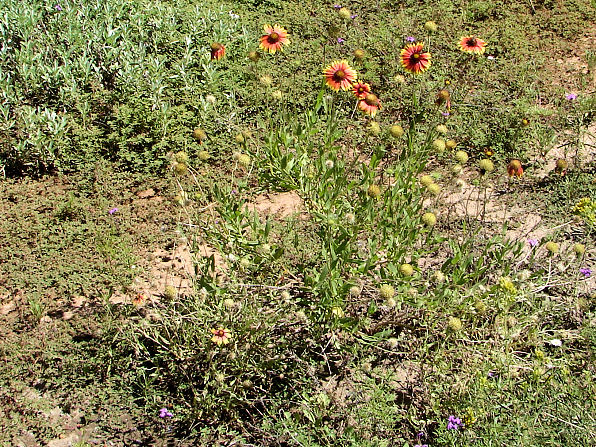 |
| Blanket Flower, Gaillardia pulchella, September 19, 2006. Boyce Thompson Arboretum, Near Superior, Arizona. |
|---|
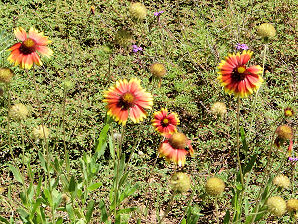 | 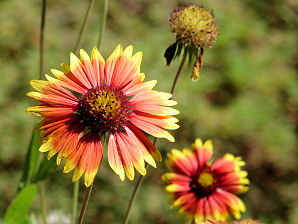 |
| Blanket Flower, Gaillardia pulchella. | Blanket Flower, Gaillardia pulchella. |
|---|---|
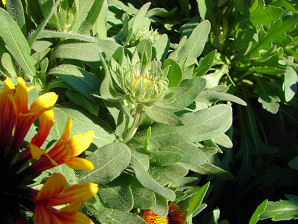 | 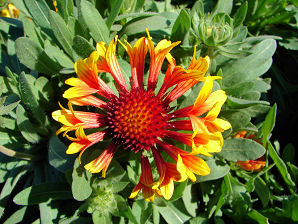 |
| Blanket Flower Leaves. | Blanket Flower Blossom. |
Blanket Flower.
We wish to thank Wikipedia, the free encyclopedia for some of the information on this page. We share images and information with Wikipedia. Indian blanket (Gaillardia pulchella) is a short-lived perennial or annual with brilliant, daisy - like flowers. The large centers of the flowers are rose-purple and the dense, petals are yellow, orange, crimson or even copper scarlet. The flowers appear in summer and are 2 - 3 inches across and are upon 18 - 36 inch light green stems. Indian blanket grows into 12 - 24 inch high mounds with a spread of about 12 inches. Indian blanket likes hot, sunny areas, good drainage, and is drought tolerant. Wet soil will cause root rot in winter. It is a colorful annual popular with bees and birds.
Quick Notes:
Height: Up To 1 to 2 feet tall. Spreading out to about 2 - 3 feet wide.
Flowers: Two - 2 inch, yellow, orange, crimson or copper scarlet flower heads appear at the ends of 18 - 36 inch light green stems. Flowers are composed of 8 to 10 rays surrounding the copper scarlet disk.
Flowering Time: May to November.
Leaves: Oblong to oblanceolate gray-green leaves up to 3 inches long.
Found: The USDA claims it is native of the USA (AK, AL, AR, AZ, CA, CO, CT, DE, FL, GA, HI, IA, IL, IN, KS, LA, MA, ME, MI, MN, MO, MS, NC, NE, NH, NM, NV, NY, OH, OK, PA, SC, SD, TN, TX, VA, VT, WI). Also native of Canada (MB, ON, QC). Also found in Northern Mexico: Baja Norte, Chihuahua, Coahuila, Durango, Nuevo Leon, Sonora, Tamaulipas, Zacatecas.
Hardiness:
Soil pH requirements:
Sun Exposure:
Elevation: 0 - 9,000 feet.
Habitat: Well drained sandy desert soils, slopes, mesas, and disturbed rocky soil.
Miscellaneous: Flowering Photos Taken September 19, 2006. Boyce Thompson Arboretum. Great xeriscape plant. We have this growing in Zone 8b.
|
We Are Proud Of Our SafeSurf Rating!
Click On Any Of The Following Links By Amazon.Com
For Books, & Videos About Wildflowers Of Arizona & The Southwest USA. No Obligation!
| © 1966 - Present, Audrey, Eve, & George DeLange |
